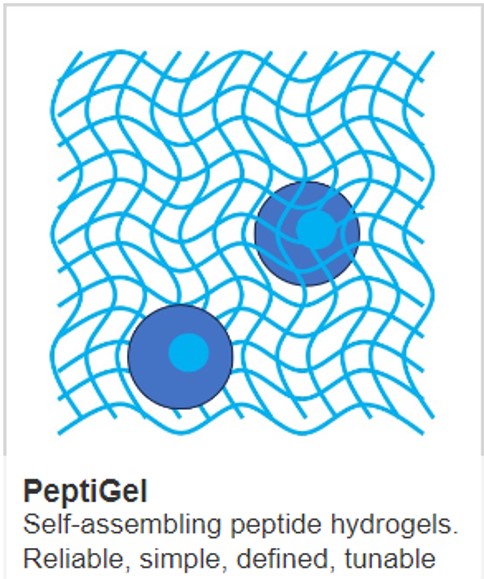Freeze Drying in Research and Medicine

Cell Guidance Systems offers freeze-drying services for research.
Freeze drying, or lyophilization, is a dehydration process typically used to preserve structural integrity and the qualities of perishable materials and biological samples. This technique has significant applications in various fields, including research and medicine. Here, we explore the principles of freeze-drying, its applications, and its impact on research and medical practices.
How does freeze-drying work?
Freeze drying involves four main stages: buffer addition, freezing, primary drying (sublimation), and secondary drying (desorption).
Buffer addition: A wide range of buffers have been developed that enhance the freeze-drying process. These cinlude buffers that are used as bulking and buffering agents, collapse temperature modifiers, tonicity modifiers, anti-microbial agents, surfactants, so-solvents and complexing agents.
Freezing: The material is first frozen to convert the water content into ice. This step is crucial as it prepares the material for the subsequent drying stages.
Primary Drying (Sublimation): In this stage, a vacuum is generated around the sample. The ice within the sample transitions directly from a solid to a gas without passing through the liquid phase (i.e. sublimation). This initial phase removes about 95% of the water content.
Secondary Drying (Desorption): The remaining water molecules, which are bound to the material, are removed by further reducing the pressure and slightly increasing the temperature. This final stage ensures that the material is thoroughly dried and stable for long-term storage.
Advantages of freeze-drying
Preservation of Integrity: Freeze drying preserves the structural and functional integrity of sensitive materials, making it ideal for biological samples, pharmaceuticals, and food products.
Extended Shelf Life: By removing water content, freeze drying significantly extends the shelf life of products, reducing the need for refrigeration and making storage and transportation more convenient.
Retained Efficacy: Freeze-dried products retain their efficacy and potency, which is particularly important for vaccines, biopharmaceuticals, and diagnostic reagents.
Convenience: Freeze-dried products are lightweight and easy to handle, making them ideal for use in field conditions, remote areas, and during emergencies.
Reconstitution: Freeze-dried products can be reconstituted by adding water or other solvents, restoring them to their original state for use.
Applications of freeze-drying in research
Biological Sample Preservation: Freeze drying is extensively used to preserve biological samples such as bacteria, viruses, and structures such as extracellular vesicles, including exosomes and proteins, for example for vaccine production and monoclonal antibodies for disease therapy. Freeze drying has also been applied to whole plasma to retain many of its medically useful properties. By removing water content, the samples can be shipped and stored at room temperature. Freeze-drier plasma can be used in the field, such as on the battlefield, with the need for cold storage.
Pharmaceutical research: freeze drying is employed to stabilize and store drugs, vaccines, and other biological products. This technique helps maintain the efficacy and shelf life of these products, crucial for clinical trials and subsequent commercialization.
Chemical Analysis: Freeze drying is also used in chemical analysis to prepare samples. By removing water, researchers can concentrate the sample, making it easier to analyse the chemical composition and properties.
Applications of freeze-drying in medicine
Vaccine Production: Freeze drying is a critical step in the production of vaccines. It ensures that vaccines remain stable and effective during storage and transportation. This is particularly important for vaccines that need to be distributed to remote or resource-limited areas where refrigeration may not be available.
Biopharmaceuticals: Many biopharmaceutical products, such as monoclonal antibodies, enzymes, and hormones, are sensitive to temperature and moisture. Freeze drying helps stabilize these products, extending their shelf life, and maintaining their therapeutic efficacy.
Tissue Engineering: In the field of tissue engineering, freeze-drying is used to prepare scaffolds and other biomaterials. By removing water content, the structural integrity of these materials is preserved, making them suitable for use in regenerative medicine and tissue repair.
Diagnostic Kits: Freeze drying is also employed in the production of diagnostic kits. Reagents and other components of these kits are freeze-dried to ensure they remain stable and effective until they are used. This is particularly important for point-of-care diagnostics, where reliable and easy-to-use kits are essential.
Blood Plasma and Other Biological Fluids: Freeze drying is used to preserve blood plasma and other biological fluids. This technique ensures that these fluids can be stored for extended periods without losing their functional properties, which is crucial for medical emergencies and transfusions. Freeze-dried plasma, for instance, can be reconstituted quickly and used in trauma care, military medicine, and remote medical facilities.
Cell Guidance Systems offers freeze-drying services for research.
IMAGE Freeze drying retains sample structural integrity. CREDIT Cell Guidance Systems



